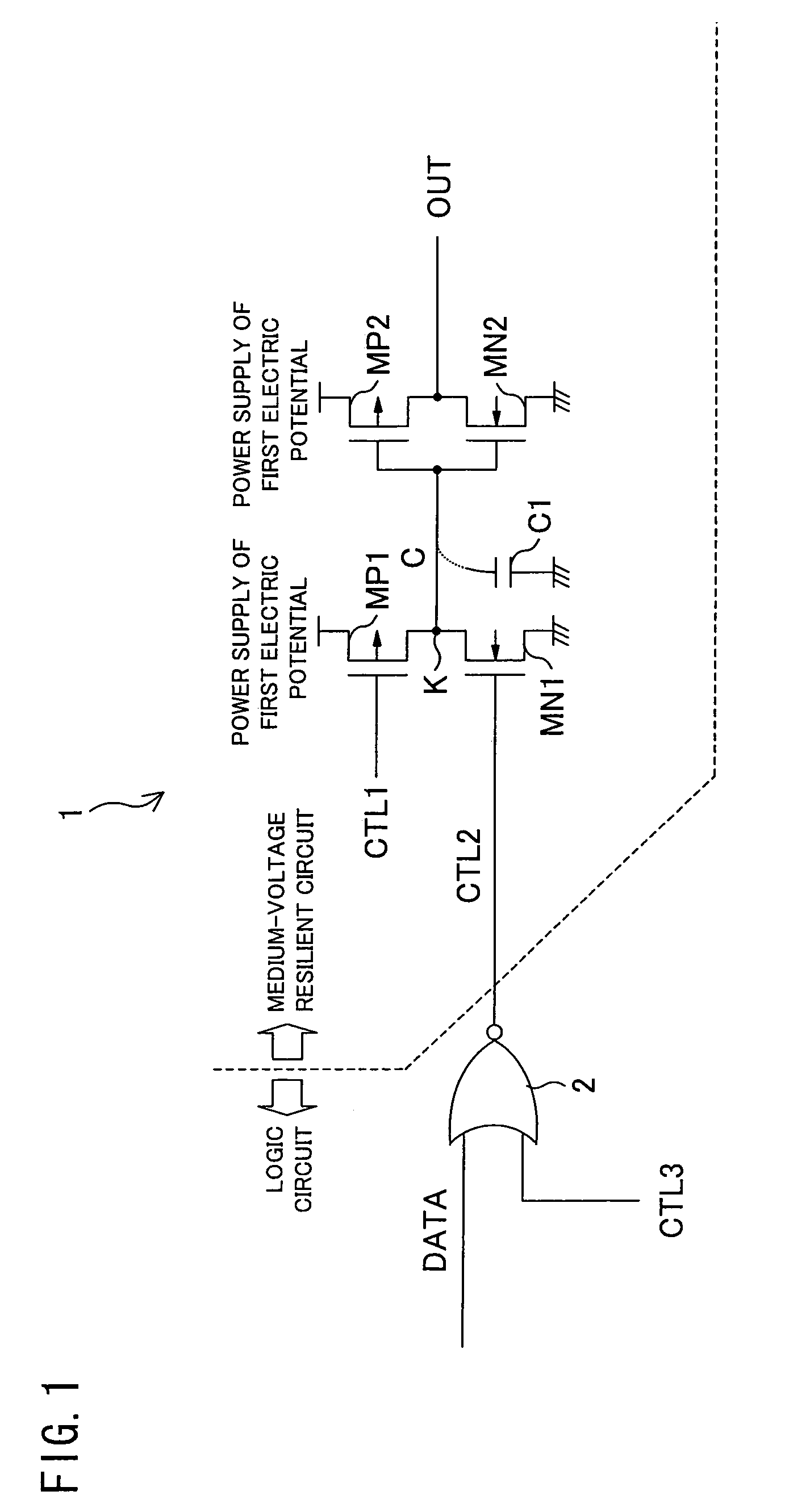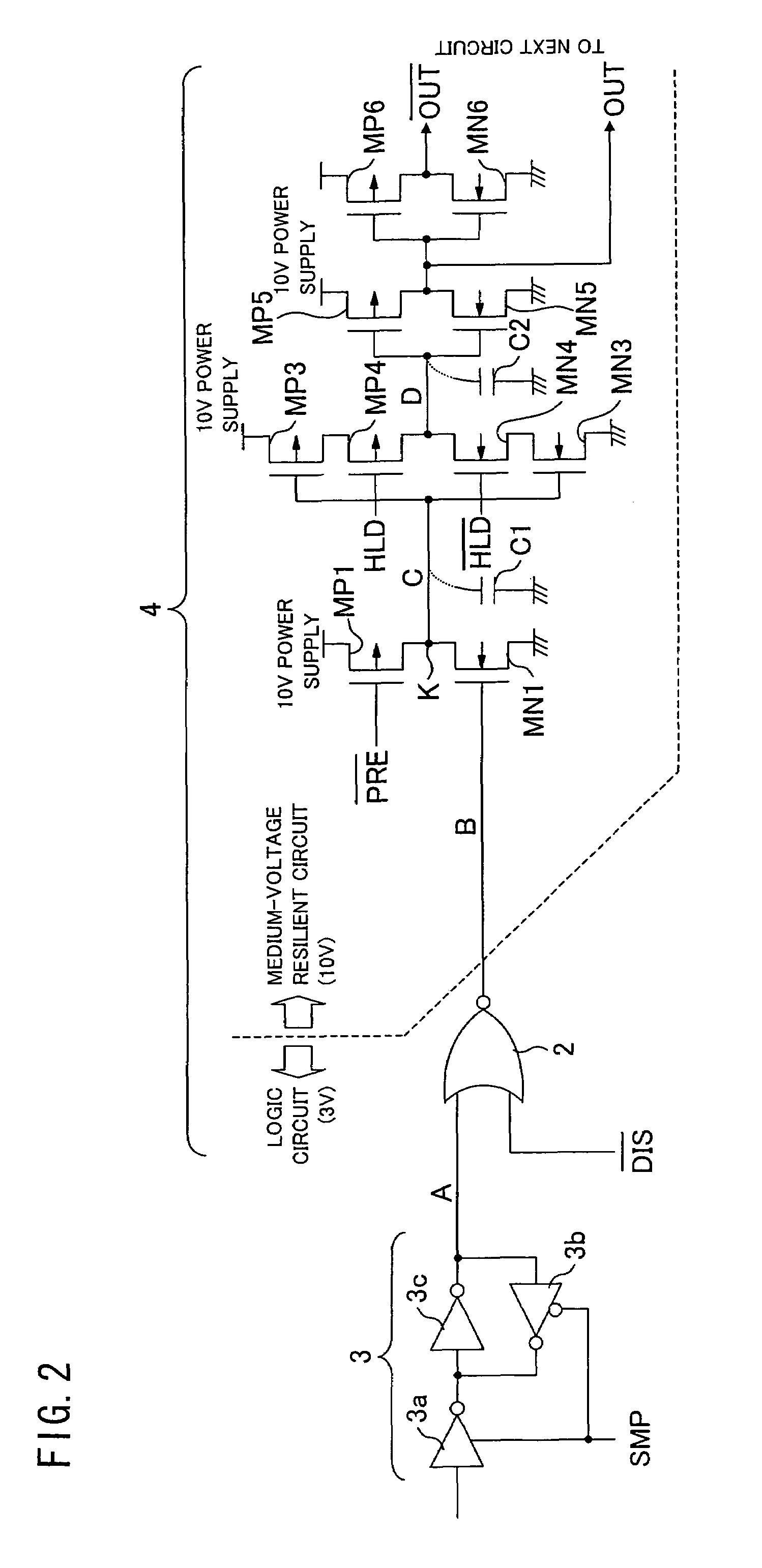Level shifting circuit and display element driving circuit using same
a level shifting circuit and display element technology, applied in logic circuits, pulse techniques, instruments, etc., can solve the problems of large variation in output electric potential, large chip size, and significant increase, so as to reduce the chip size and the planar dimension of the level shifting circuit.
- Summary
- Abstract
- Description
- Claims
- Application Information
AI Technical Summary
Benefits of technology
Problems solved by technology
Method used
Image
Examples
Embodiment Construction
[0053]The following describes an embodiment of the present invention with reference to FIG. 1 through FIG. 3.
[0054]FIG. 1 illustrates a configuration of a dynamic sampling type level shifting circuit 1 (Hereinafter referred to as level shifting circuit), in accordance with the present embodiment.
[0055]A level shifting circuit 1 includes: P-channel MOS transistors MP1 and MP2; N-channel MOS transistors MN1 and MN2; and a NOR circuit 2.
[0056]The source of the MOS transistor (first MOS transistor) MP1 is connected to a power supply of a first electric potential which is higher than a GND potential. The source of the MOS transistor (second MOS transistor) MN1 is connected to a GND. The drain of the MOS transistor MP1 and the drain of the MOS transistor MN1 are connected with each other, at a connection point-K. A control signal (first control signal) CTL1 is inputted as a gate signal to the gate of the MOS transistor MP1, and a control signal (second control signal) CTL2 is inputted as ...
PUM
 Login to View More
Login to View More Abstract
Description
Claims
Application Information
 Login to View More
Login to View More - R&D
- Intellectual Property
- Life Sciences
- Materials
- Tech Scout
- Unparalleled Data Quality
- Higher Quality Content
- 60% Fewer Hallucinations
Browse by: Latest US Patents, China's latest patents, Technical Efficacy Thesaurus, Application Domain, Technology Topic, Popular Technical Reports.
© 2025 PatSnap. All rights reserved.Legal|Privacy policy|Modern Slavery Act Transparency Statement|Sitemap|About US| Contact US: help@patsnap.com



